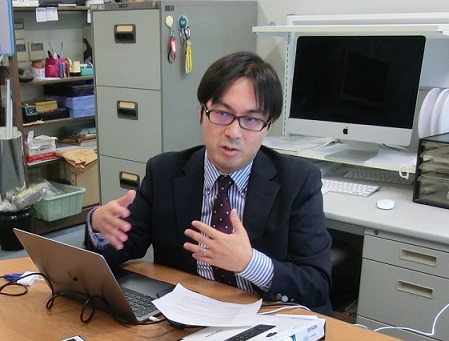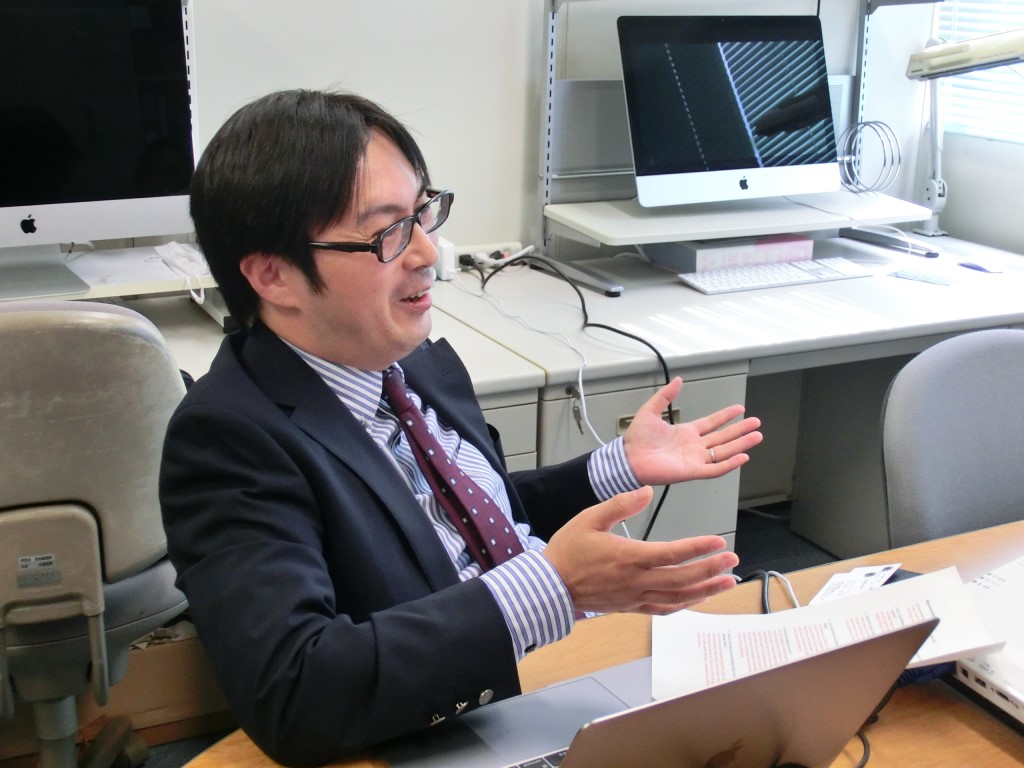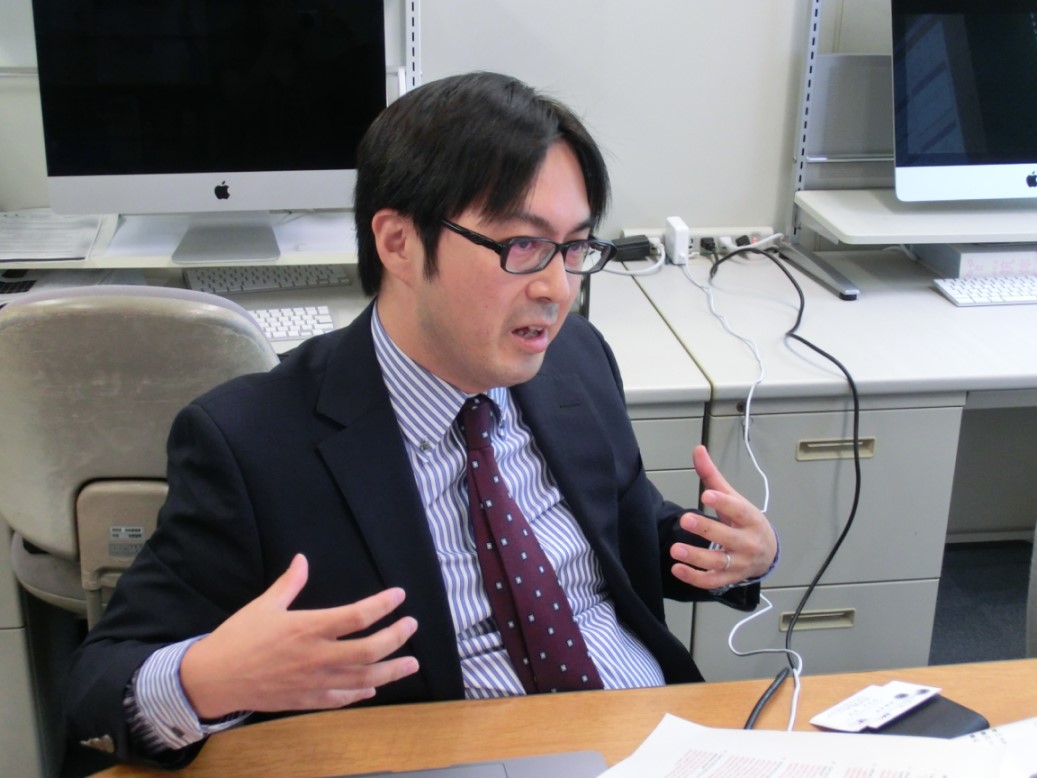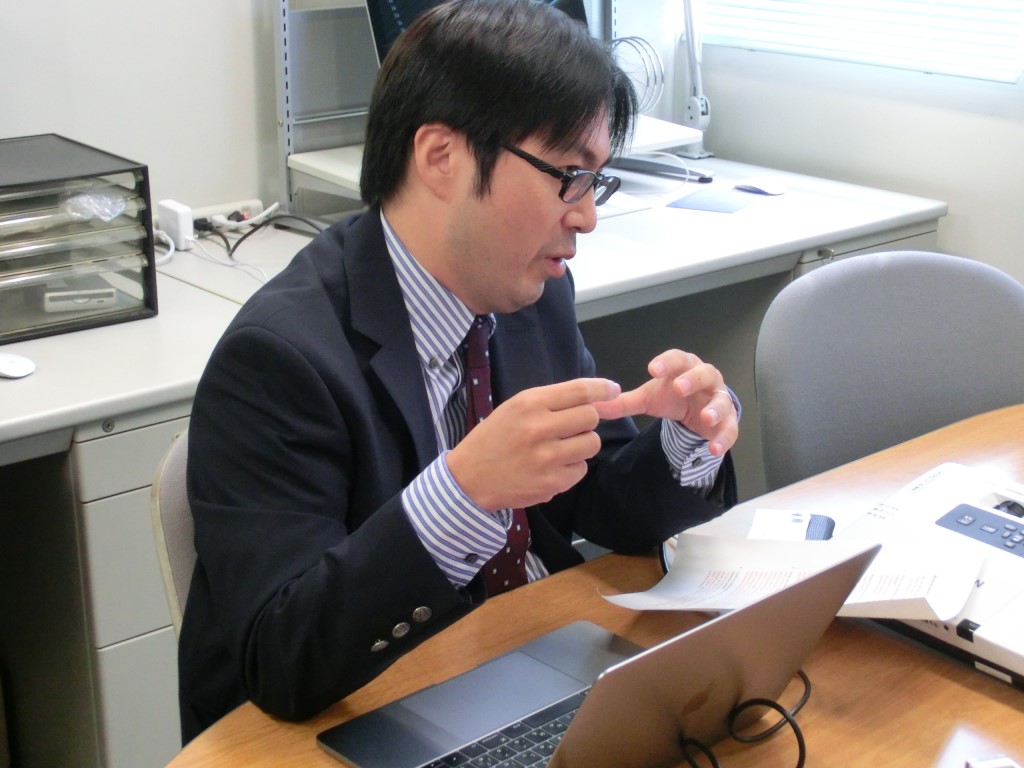A Conversation with Distinguished Researcher Tatsuo Miyamoto

Can you tell me your specialist field?
My field is in Cell Biology and Human Genetics.
Your background was in cell biology but now you work in Radiation Biology. How did that happen?
My background is in Cell Biology. Getting into Radiation Biology was actually an accident!
During the post-doctorate, my collaborator introduced me to my current boss. He was originally a pediatrician. During his career, he identified a master regulator of DNA repair using human genetics.
Now I work with my boss to screen the genetic factor underlying the individual differences in radiosensitivity and radiation-induced carcinogenesis risk. I think it is a very interesting and important topic in Hiroshima University.
What is the difference between “Radiation Biology and Medicine” and medicine?
Radiation Biology is a part of life-science and medicine. In contrast, “Radiation Biology and Medicine” is a unique approach of Hiroshima University and it has many impacts.
The knowledge of Radiation Biology from this Institute has been applied to basic biology, clinics and social problems such as radiation disasters. It is based on medicine and then applied to clinical situations.

What is the future outlook for this field, what's the next big thing in your field?
In this field, we will explore new molecular mechanisms of DNA repair or chromosome stability. Sometimes, chromosomal abnormalities can be fixed. If we control this mechanism, we can cure more genetic disorders.
Another topic is the individual differences in DNA repair within human populations. Similar to how alcohol can make some people's faces turn red due to genetic differences, some people can be more sensitive to radiation. I hope screening for these differences can be carried out in clinical settings.

What are the challenges of your work?
My current challenge is to explore the relationship of radiation-cancer risk among the biological hierarchy (cell-individual-population). We evaluate the radiation-cancer risk from the various viewpoints. I try to integrate all these risks, but it is a lot of work.
Could you tell me about your work, especially relating to how it is important in a Japanese context?
For example, the epidemiological risk from Hiroshima/Nagasaki A-bomb survivors has been used to determine the safe doses in many situations including working exposure management and radiation disasters. Using an analysis of cancer patients and genome editing technology, we can now investigate the genetic diversity of radio sensitivity in human edited-cell clines and the edited mice to make the conversion formula of radiation risk.
As you know, more recently since the Fukushima Nuclear Plant accident, radiation-induced cancer risk has been a major concern for public health.
What are you working on now?
Intracellular Cholesterol transport.
Cilia are like little strands on the cell surface. Ciliapathic diseases (those that have malfunctioning cilia) can lead to deformities, and I wanted to find out why. I have found a cholesterol-insufficiency- mediated pathological mechanism underlying the ciliopathy. Maybe this could lead to a new genome-editing technique or a new drug target.
Which area of your work are you most enthusiastic about?
Most of my work starts from rare diseases, even though they are not as attractive to drug companies as more common diseases.
Research like mine has a big chance to find unknown physiological and pathological mechanisms. I hope that my research will reach the bedside treatments. Recently, we are supported by AMED to develop the drug to cure the ciliopathy through controlling the cholesterol dynamics.

I know the Research Institute for Radiation Biology works closely with other institutes around Japan. What are your thoughts on collaboration?
We collaborate a lot with the Higashi-Hiroshima campus and the University Hospital.
For the collaboration, the curiosity among the scientists is key. When it does not match, the collaboration will result in failure. In contrast, the curiosity shared with collaborators often overcomes difficult situations. Therefore, I have not participated in a collaboration that doesn't have the same level of curiosity. For me, collaborators are like family!
When not in the office how do you spend your time?
Sometimes I do extra work! I also like to stay with my family; I like running and playing catch (baseball) with my sons.

 Home
Home